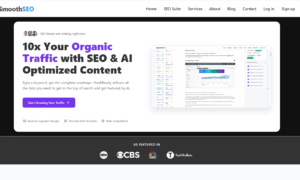Creating search engine optimization (SEO)-optimized content is vital for any website seeking to improve its visibility and attract organic traffic. It ensures that search engines like Google, Yahoo, and Bing can easily understand and rank your content. In this article, we discuss various strategies that can be employed to create effective and impactful SEO-optimized content for your site, which helps in boosting its rankings on search engine result pages.
Keyword Research and Placement
Identifying the most relevant and popular keywords for your content is the starting point of any SEO strategy. This can be achieved through brainstorming, using keyword research tools, and analyzing your competitors content. Once the keywords are identified, incorporate them seamlessly and naturally in your content. Be mindful of keyword density and avoid overusing them, which could result in keyword stuffing and search engine penalties.
Quality and Readable Content
The foundation of successful SEO lies in creating high-quality, relevant, and useful content that meets the needs of your target audience. Content that is well-written, properly structured, and engaging will captivate your readers, who will be more inclined to share your content, generating valuable backlinks and increasing your sites authority. Make your content easy to read and digest by breaking up long paragraphs, using shorter sentences, and including visuals.
Optimize Your Headings
Headings, especially H1 and H2 tags, play a crucial role in SEO optimization. Search engines use these tags to understand the structure of your content and identify the most important sections. Incorporate your primary keyword in the H1 tag and use the H2 tags for secondary keywords. Keep your headings brief and descriptive to ensure that users can quickly scan your content and understand its topic.
Meta Description and Title Tags
Create a compelling, informative, and keyword-rich meta description and title tag for your content. These elements appear in search engine result pages and are instrumental in driving clicks to your site. Ensure that both the title tag and meta description are unique for each page and provide an accurate summary of the content.
Optimize Images and Videos
Visual content, such as images and videos, can also be optimized for SEO. Reduce the file size of images to ensure faster page load times. Add descriptive file names, alternative text, and captions to images and videos that include relevant keywords, which will help search engines understand their relevance to your content.
Mobile-Friendly and Responsive Design
With the majority of web traffic generated from mobile devices, it is crucial that your content is mobile-friendly and responsive. This means that the content must display correctly on different screen sizes, loads quickly on mobile devices, and is easily navigable. A mobile-friendly site not only boosts user experience but also has a positive impact on search engine rankings.
Internal and External Link Building
Generating a strong link profile is essential for successful SEO. Include links throughout your content to relevant, reputable, and authoritative external sources. This establishes credibility and shows search engines that your content is well-researched and accurate. Additionally, build an internal linking structure that connects related content within your site. This not only improves the user experience but also helps search engines discover and index your pages more efficiently.
Regularly Update and Revise
Search engines reward fresh and up-to-date content. With the constantly changing landscape of the internet, it is crucial to revisit, revise, and update your content regularly. This also provides an opportunity to evaluate the effectiveness of your SEO strategies, analyze user feedback, and refine your tactics accordingly.
Conclusion
Creating effective SEO-optimized content is not an overnight process, but a result of consistently implementing proven strategies and adapting to the ever-evolving guidelines of search engines. Employ the techniques discussed in this article to build an SEO-friendly website that attracts organic traffic, engages your audience, and ultimately, boosts your search engine rankings.



































